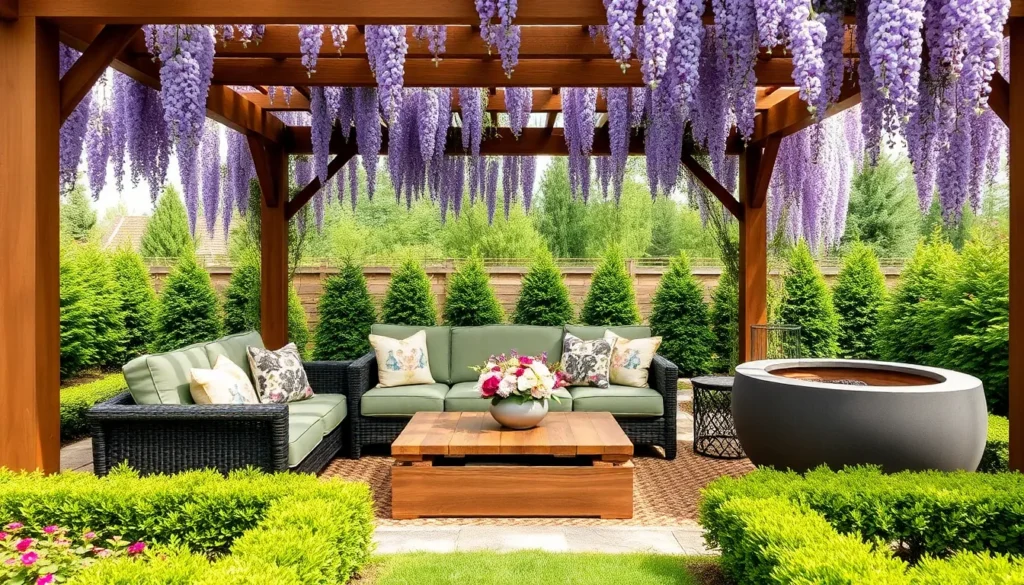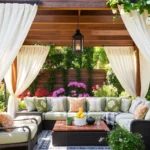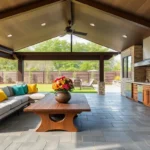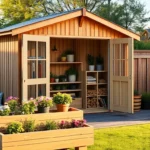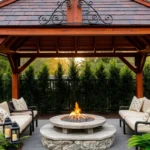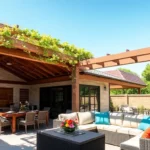Welcome to a world where your backyard becomes a sanctuary of style and comfort! Whether you’re just starting to explore the joys of outdoor living or you’re a seasoned pro looking to enhance your existing space, our guide, “12 Stylish Garden Shelter Ideas for Every Yard,” is your ticket to transforming your garden into a stunning retreat. With a mix of inspiring ideas and practical solutions, you’ll discover how to create a haven that reflects your personal style and meets your needs.
Imagine the satisfaction of having a garden that not only looks beautiful but also serves as a functional extension of your home. This collection of garden shelter ideas will empower you to make confident choices, offering protection from the elements while enhancing the aesthetic of your outdoor area. Dive in and prepare to reap the rewards of a well-designed, inviting space that beckons you to unwind and enjoy the pleasures of outdoor living.
Incorporate Retractable Canopy Systems
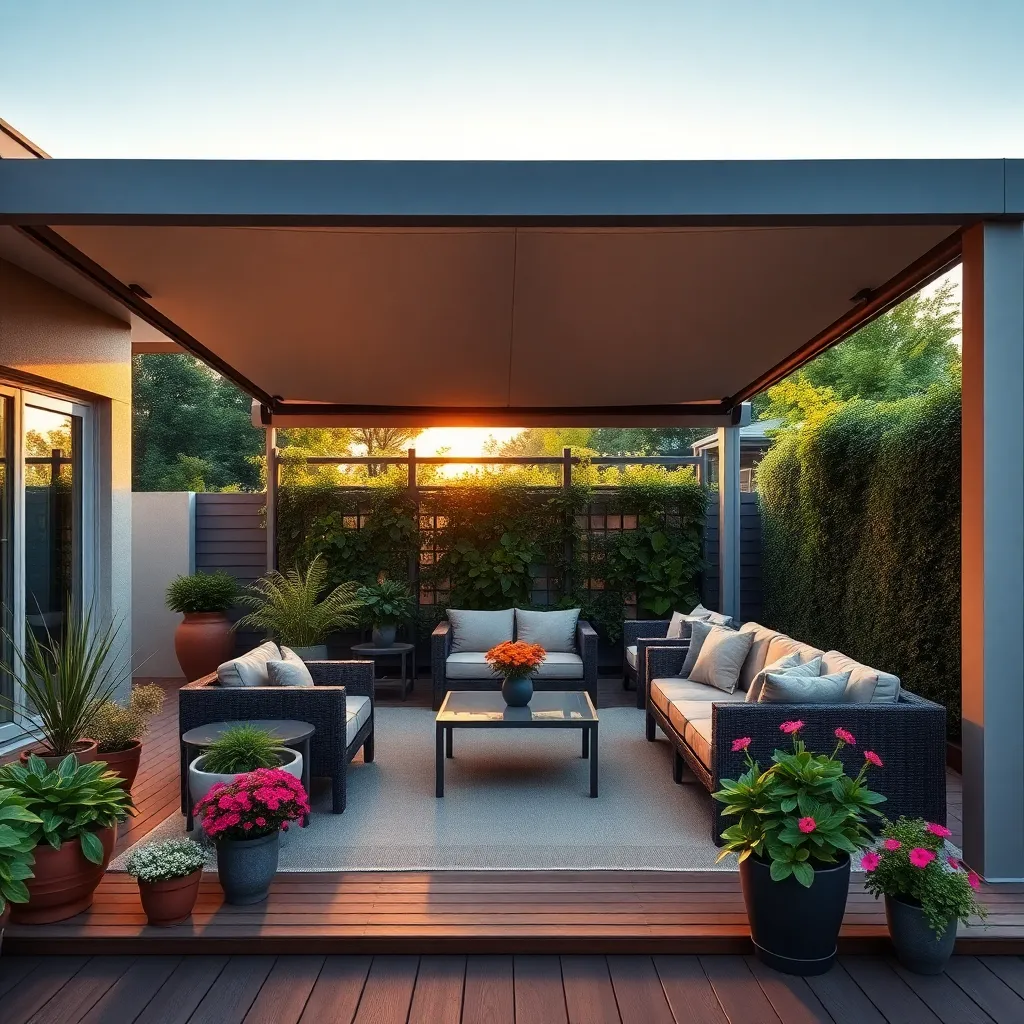
Consider incorporating retractable canopy systems to create a dynamic garden shelter that adapts to your needs. These systems provide flexibility by allowing you to control the amount of sunlight and shade, perfect for variable weather conditions. Choose durable materials like weather-resistant acrylic fabric or PVC-coated polyester to ensure longevity and maintain a sleek appearance. For beginners, look for ready-made kits with easy installation instructions, while advanced DIYers might explore customized options that fit specific dimensions and styles.
Maximize your outdoor space by installing a retractable canopy over patios or decks, utilizing existing structures for support. Ensure the canopy system is mounted securely to withstand wind and other elements, using stainless steel hardware for added durability. To enhance aesthetics, consider coordinating the canopy color with your garden décor or choosing a pattern that complements your overall design theme. By integrating lighting elements, such as LED strips, you can extend the usability of your space into the evening, creating a cozy and inviting atmosphere.
Add Rustic Pergola Structures
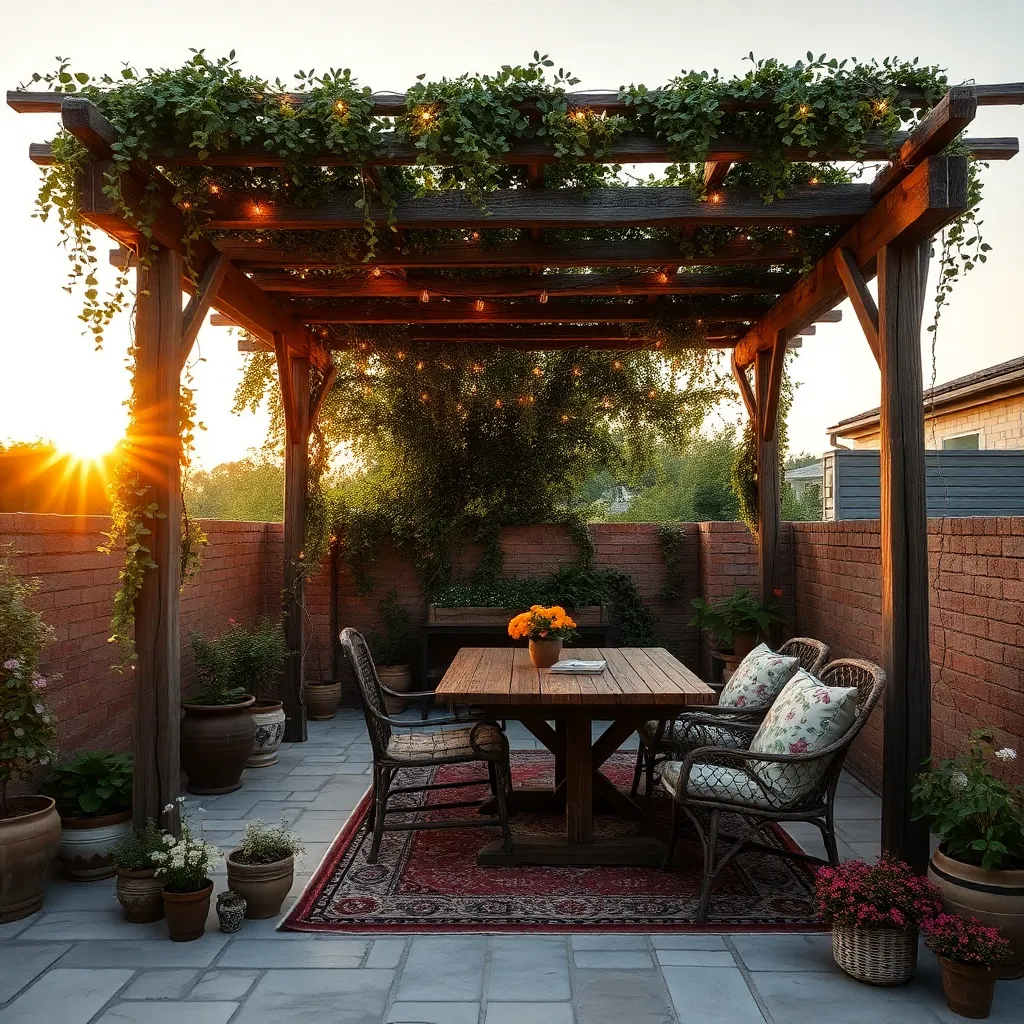
For a touch of timeless charm, consider adding a rustic pergola to your garden. These structures not only provide a shaded retreat but also serve as a stunning visual centerpiece. Begin with selecting durable materials like cedar or redwood, which are naturally resistant to rot and insects. Opt for a simple design with a slatted roof to allow for just the right balance of sun and shade. Beginners can start with a basic kit to simplify the installation process, while more advanced DIY enthusiasts might enjoy crafting custom touches, such as decorative brackets or intricate latticework.
Enhance your pergola’s rustic appeal by incorporating natural elements and textures. Climbing plants like wisteria or jasmine can be trained to weave through the beams, adding a lush, green canopy over time. Consider adding weatherproof furniture beneath to create an inviting alfresco dining area or a cozy nook for relaxation. For a professional finish, ensure your pergola is securely anchored to withstand harsh weather. By thoughtfully selecting materials and design elements, your rustic pergola can become a beloved feature of your outdoor space.
Utilize Multi-Functional Furniture Pieces
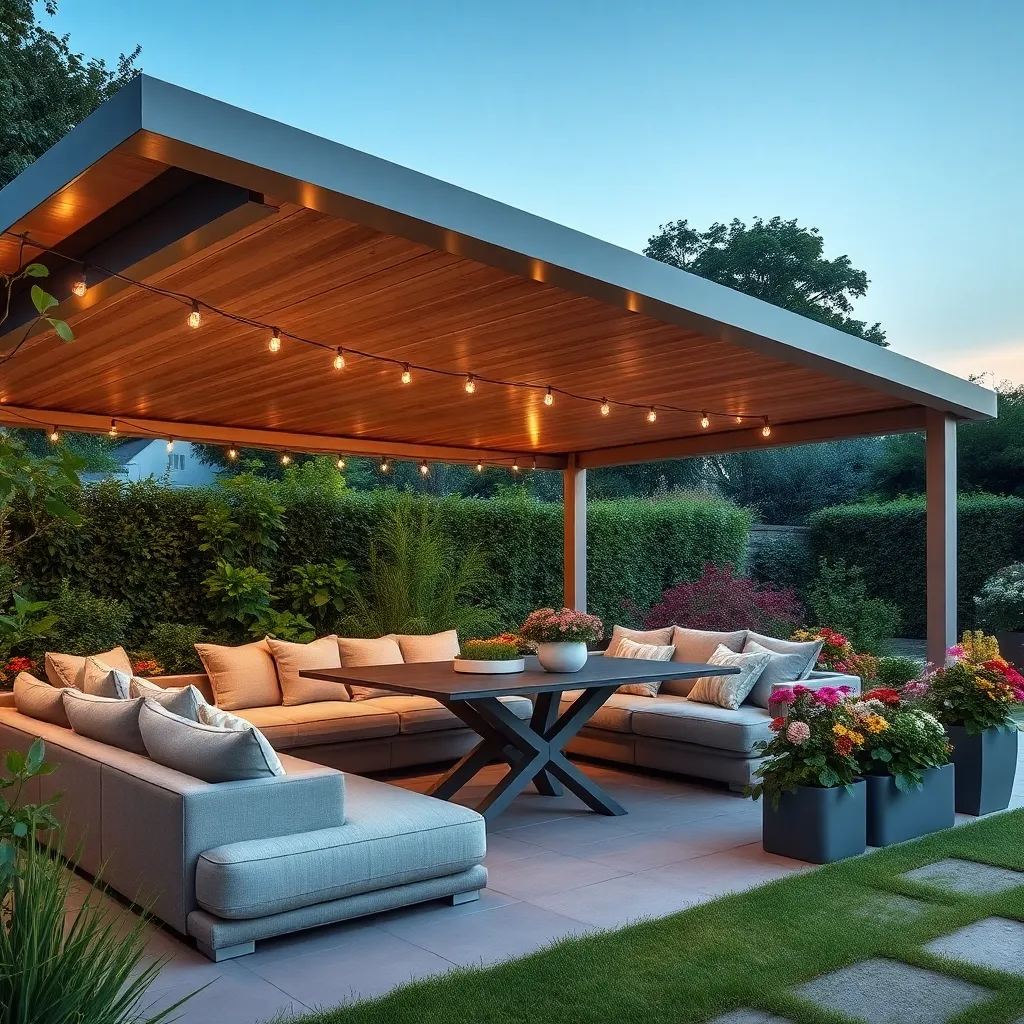
To maximize your garden shelter space, consider integrating multi-functional furniture that serves dual purposes. For example, a bench with built-in storage can provide seating while also housing outdoor cushions or gardening tools. Look for pieces made from durable materials like teak or powder-coated metal, which withstand the elements and require minimal maintenance.
When choosing furniture, think about incorporating modular designs that can be easily rearranged to suit different gatherings or activities. Consider investing in a table with an integrated cooler or a fire pit that doubles as a coffee table. These versatile pieces not only enhance the functionality of your outdoor shelter but also add a layer of convenience that transforms how you use the space.
Create Living Green Roofs
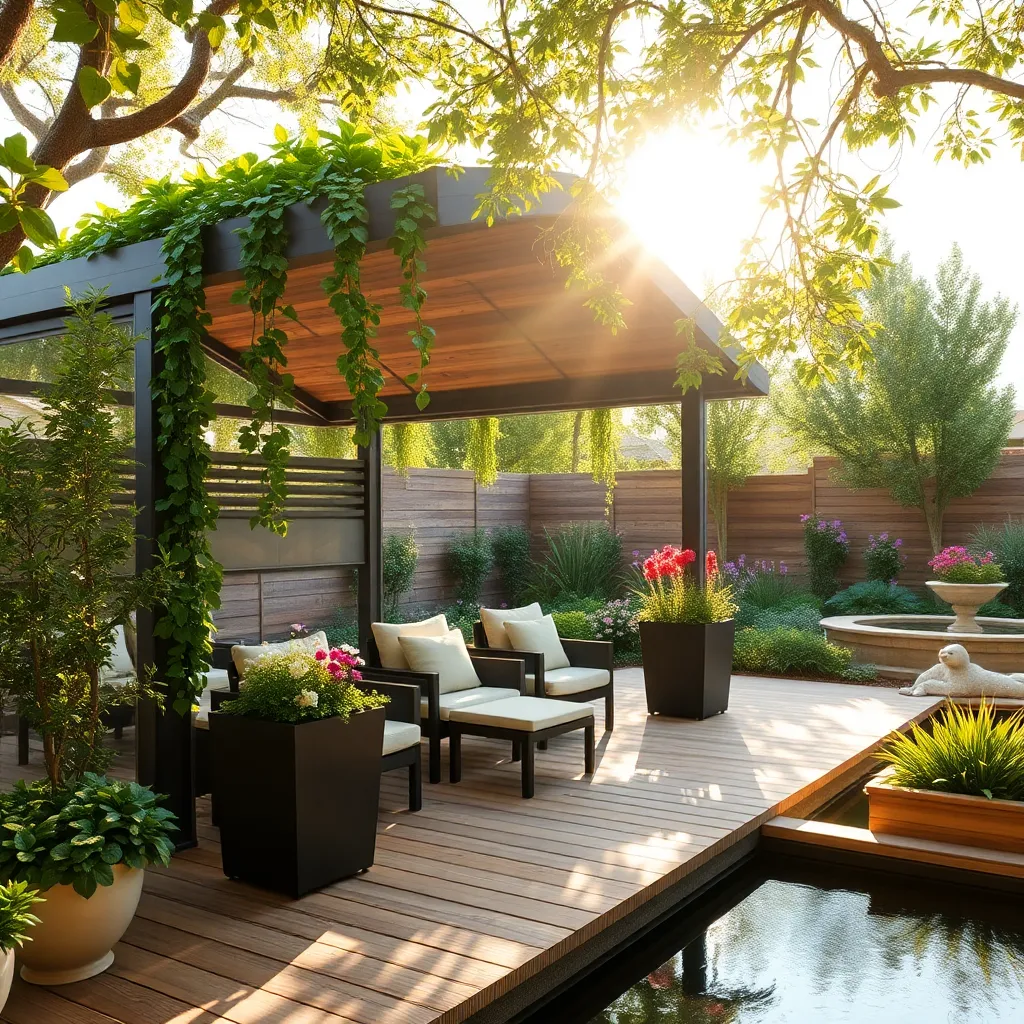
Transform your garden shelter into an eco-friendly haven by creating a living green roof. Start with a sturdy structure that can support additional weight, such as a pergola or a flat-roofed gazebo. Use lightweight materials, like a waterproof membrane and a drainage layer, to protect the roof beneath. For beginners, opt for drought-resistant succulents or sedums that require minimal maintenance. Ensure proper sunlight exposure and water drainage to keep your green roof thriving. This sustainable choice not only enhances the aesthetic appeal of your yard but also provides insulation, reducing energy costs.
For those ready to take it up a notch, consider incorporating a variety of plants to attract pollinators and boost biodiversity. Use a growing medium specifically designed for green roofs, typically a mix of sand, compost, and lightweight aggregates. Plan a layout that includes a mix of perennials and native wildflowers to create a vibrant, ever-changing tapestry. Regularly inspect your green roof for any signs of damage or waterlogging, and adjust plant selections based on seasonal changes. This advanced approach supports local wildlife and adds a lush, living dimension to your outdoor space.
Install Cozy Fire Pit Areas
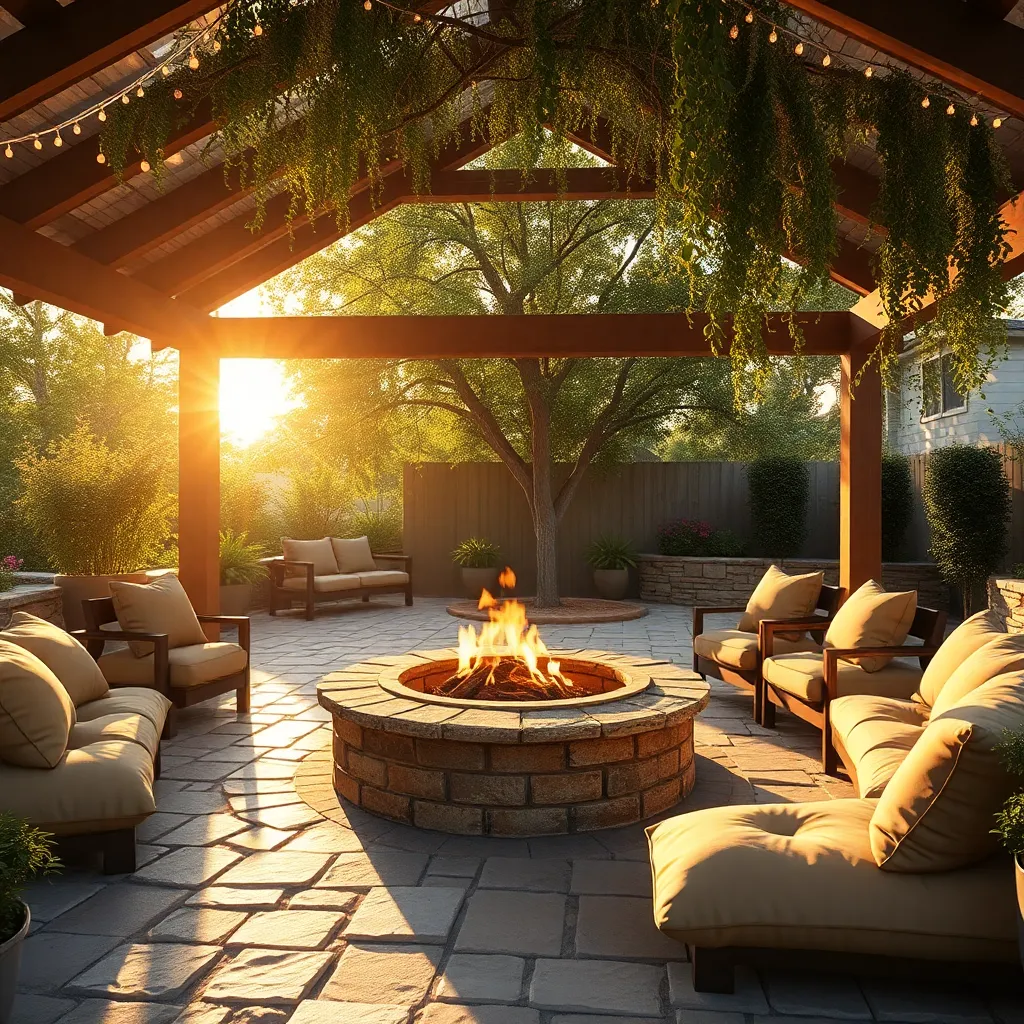
Transform your backyard into a cozy retreat by installing a fire pit area. Start by selecting a suitable location that is at least 10 feet away from your home or any flammable structures. Choose a fire pit style that complements your garden’s aesthetics, such as a classic stone circle or a sleek metal bowl. For materials, consider durable options like heat-resistant bricks, pavers, or cast iron. Beginners can opt for pre-made kits that simplify the process, while experienced DIYers might prefer building a custom design. Ensure the installation includes a solid, non-flammable base such as gravel or concrete, which provides safety and stability.
Enhance the area with comfortable seating and ambient lighting to create an inviting atmosphere. Arrange weather-resistant furniture, like teak or metal chairs, around the fire pit, ensuring they’re at a safe distance to prevent overheating. For added comfort, include cushions made from outdoor fabrics that resist moisture and fading. Consider incorporating landscape elements such as low-maintenance shrubs or decorative stones to define the space. To add a touch of elegance, string lights or lanterns can provide warm illumination, making your fire pit area a perfect spot for relaxation or entertaining guests under the stars.
Design with Waterproof Fabrics
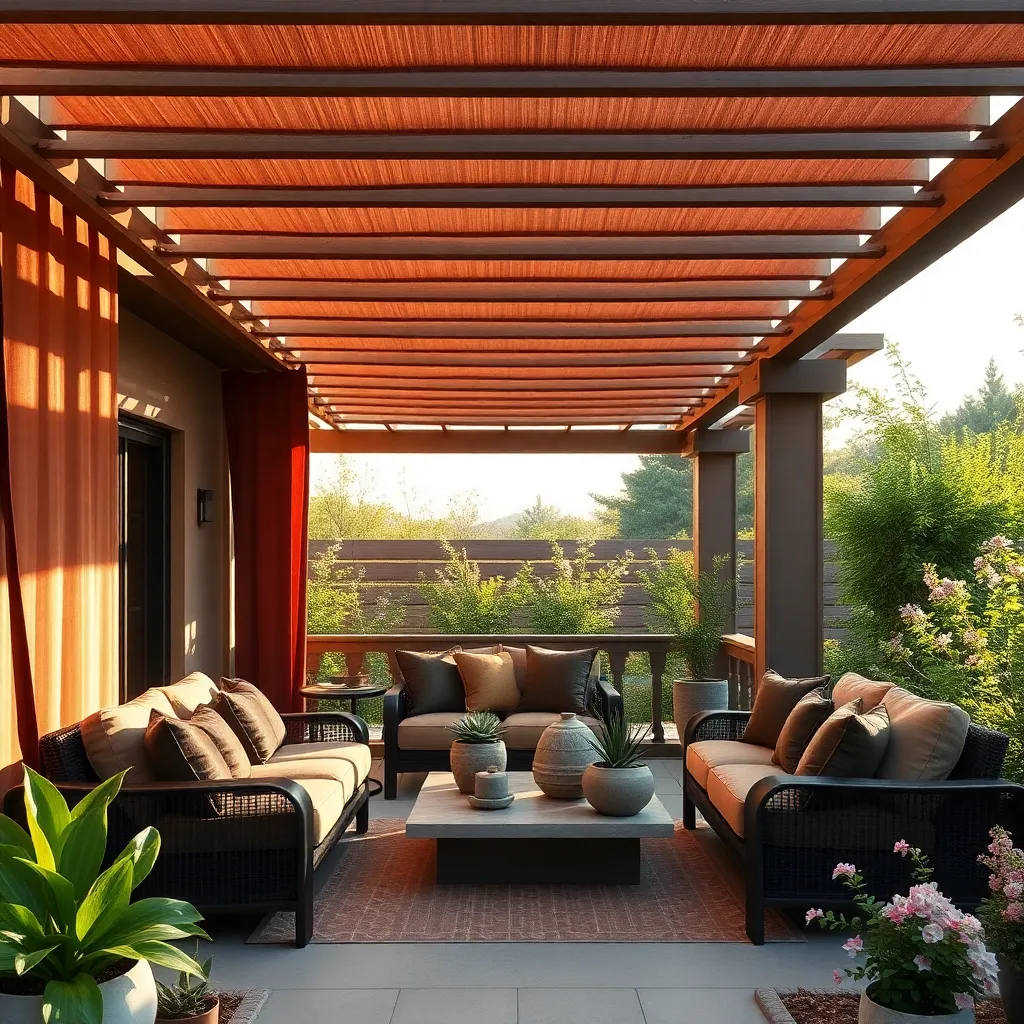
Embracing waterproof fabrics in your garden shelter design ensures durability and year-round functionality. Start with choosing high-quality, UV-resistant materials like polyester or vinyl-coated canvas, which offer excellent protection against rain and sun. Consider incorporating fabrics with a minimum denier of 300 for enhanced strength and longevity. These materials can be used for awnings, pergola covers, or even custom canopies, providing versatile options for your outdoor space.
For a polished look, explore using vibrant or patterned waterproof fabrics to add personality to your shelter. Opt for neutral tones to blend seamlessly with natural surroundings or bold colors to create a standout feature. Advanced tip: Incorporate grommets or reinforced edges to ensure the fabric stays securely in place, even during windy conditions. By prioritizing functionality and aesthetics, you can create a shelter that not only protects but also enhances your garden’s style.
Implement Minimalist Gazebo Designs
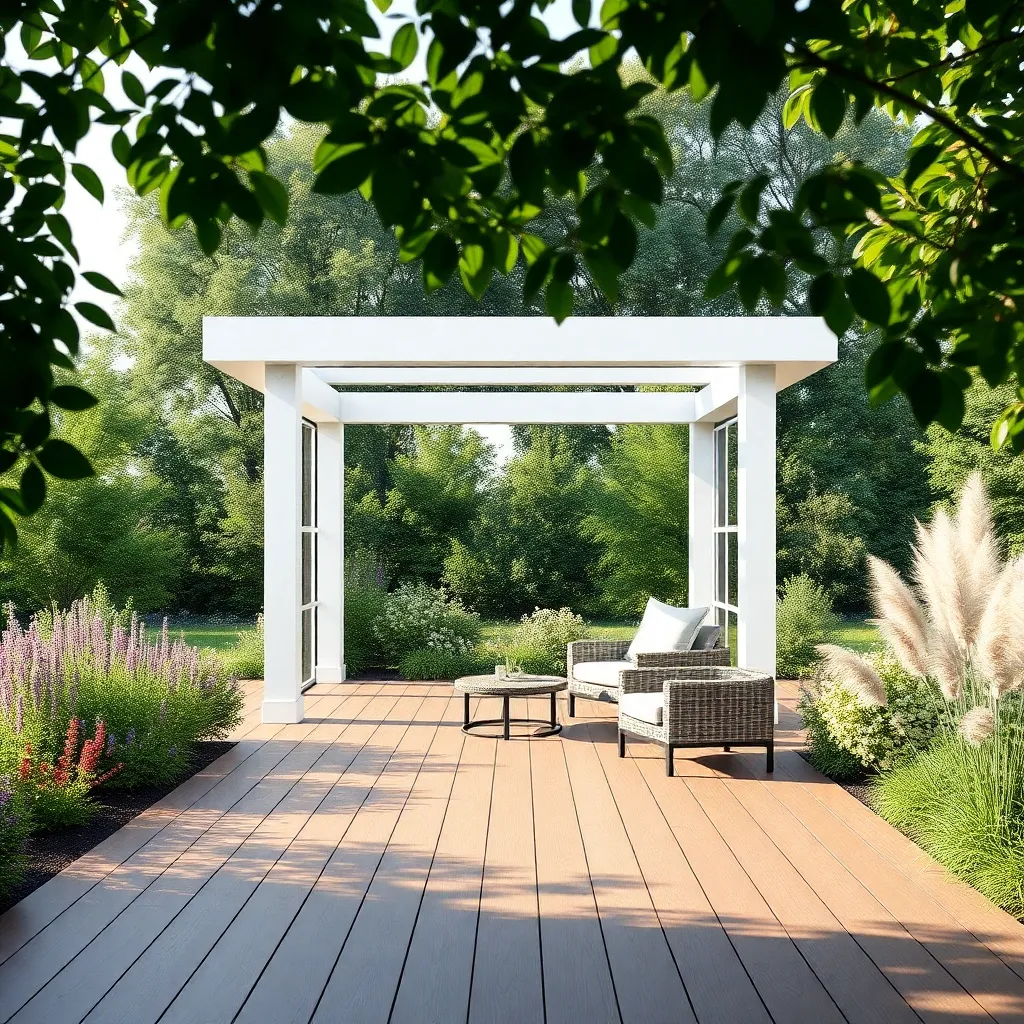
For a minimalist gazebo design that seamlessly integrates into your garden, focus on clean lines and simplicity. Opt for materials like aluminum or powder-coated steel to ensure durability without overwhelming the space. Consider a flat or gently sloping roof to maintain that minimalist aesthetic. Incorporate open sides to enhance airflow and create a more spacious feel, while also allowing for unobstructed views of your garden. This approach not only complements various garden styles but also provides a functional, stylish retreat from the elements.
When constructing your minimalist gazebo, keep dimensions in mind to suit your yard’s scale. A 10×10 feet structure is ideal for small to medium-sized gardens, offering ample space for seating without taking over the landscape. For those looking for an advanced touch, integrate solar-powered lighting for an eco-friendly illumination option. Choose neutral colors like grey, white, or black to maintain the minimalist vibe and ensure your gazebo remains a timeless addition to your outdoor space. By focusing on these elements, you can create a serene and modern garden shelter that invites relaxation.
Plant Vertical Garden Walls
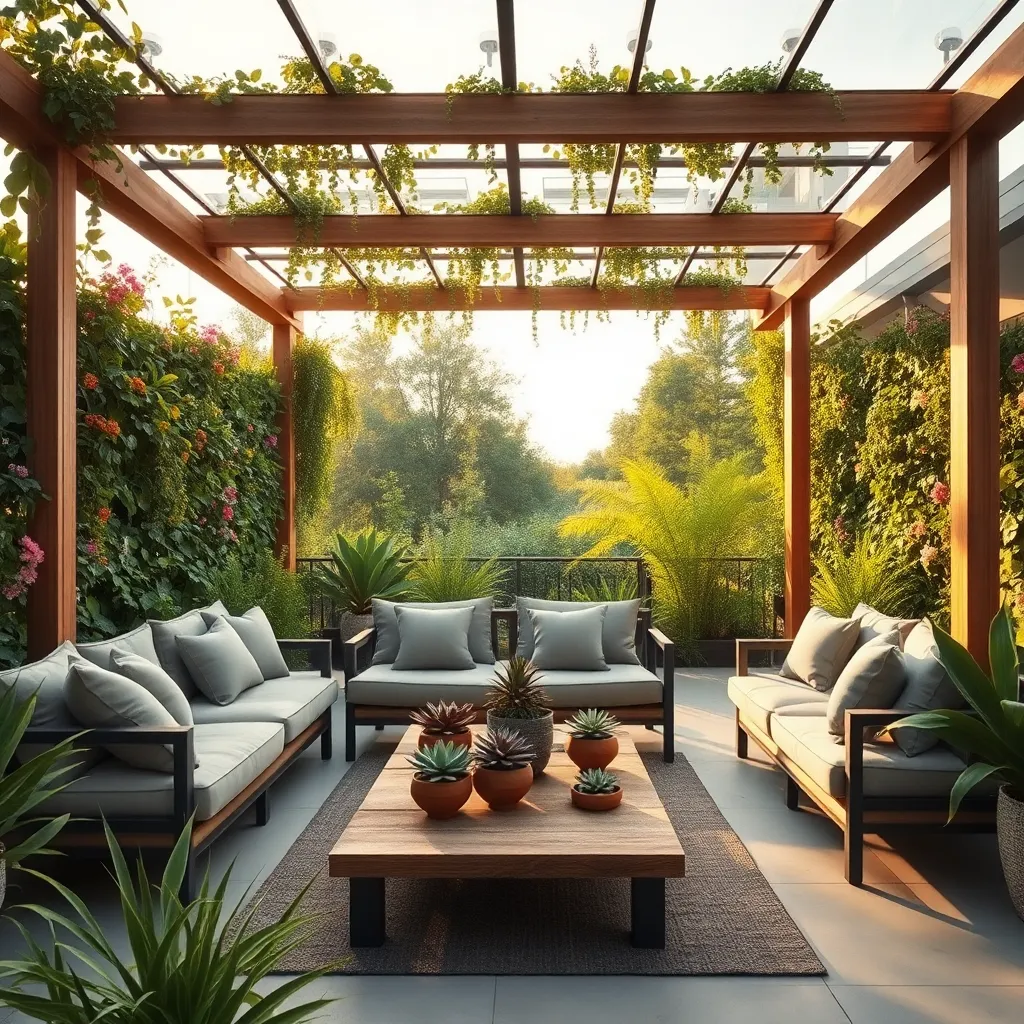
Vertical garden walls not only enhance the aesthetic appeal of your outdoor space but also offer a practical solution for maximizing limited areas. To create one, start by choosing a sturdy frame material like wood or metal that can withstand outdoor conditions. Install a waterproof barrier at the back to protect your wall, and consider using modular panels or pre-made pockets for planting, which can be easily adjusted or replaced. Ensure proper drainage and use lightweight potting mix to keep the structure stable and healthy.
For beginners, start with easy-to-grow plants such as ferns, succulents, or herbs that thrive in vertical settings. More advanced gardeners might opt for incorporating a drip irrigation system to maintain consistent watering without effort. Position your garden wall in a spot that receives adequate sunlight for your chosen plants, and regularly check for pests or diseases. By integrating a vertical garden wall into your yard, you’ll enjoy a lush, living wall that provides both beauty and function, creating a unique garden sanctuary.
Use Transparent Roof Materials
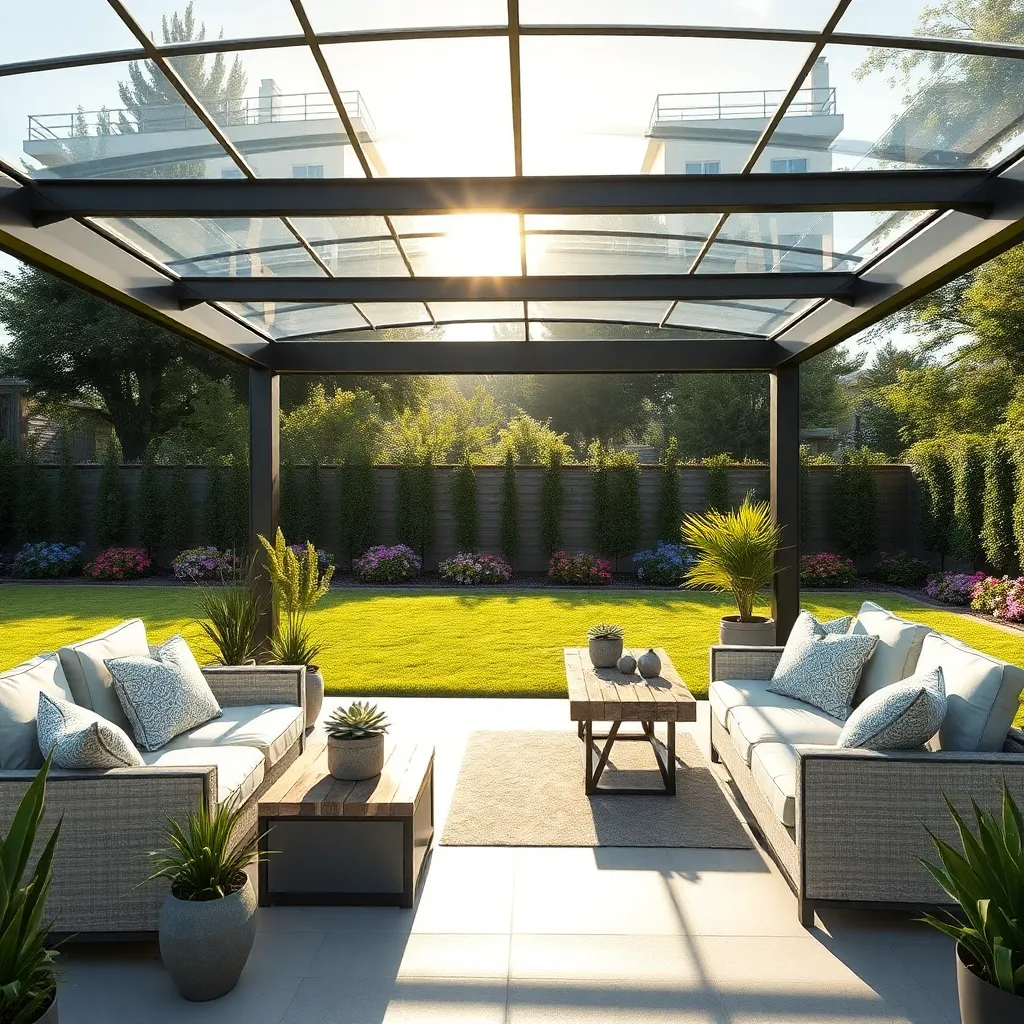
To create a stunning garden shelter, consider using transparent roof materials like tempered glass or polycarbonate panels. These materials allow natural light to flood the space, maintaining a bright and airy feel while offering protection from the elements. For beginners, polycarbonate panels are a practical choice due to their durability and ease of installation. Simply attach them to a wooden or metal frame, ensuring they are secured properly to withstand weather conditions.
For those ready to take on a more advanced project, integrating a combination of transparent and opaque materials can add a modern touch. Consider incorporating UV-filtering glass to protect from harmful rays while still enjoying the sunlight. This dual approach not only enhances the aesthetic appeal of your garden shelter but also provides a comfortable space for relaxation or entertaining. Remember to ensure proper support and drainage, especially in areas with heavy rainfall, to maintain the longevity of your shelter.
Integrate Solar-Powered Lighting
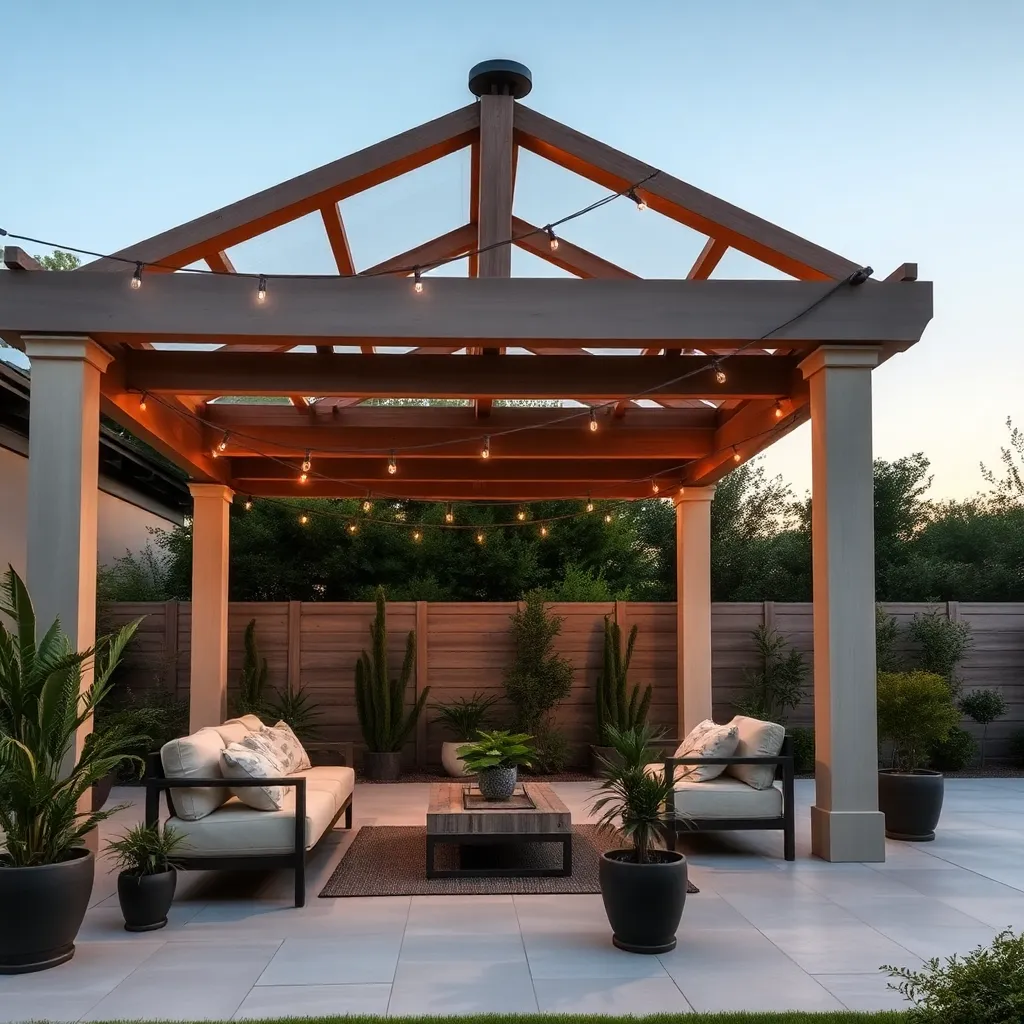
Integrating solar-powered lighting into your garden shelter is a sustainable way to enhance its functionality and ambiance. Start by selecting solar lights designed for outdoor use, ensuring they are weather-resistant and suitable for your local climate. Place the solar panels in a sunny spot, ideally on the roof of the shelter, to maximize energy absorption. Consider using a mix of solar fairy lights for a soft glow and solar lanterns for more focused lighting. This combination not only boosts visibility but also adds a touch of elegance to your outdoor space.
For those looking to elevate their garden shelter design, consider installing solar-powered LED strip lights along the edges of the roof or under seating areas. These lights can create a modern and sleek look while providing ample illumination. Choose LED lights with adjustable brightness settings to customize the ambiance based on your needs, from bright for social gatherings to dim for a cozy evening retreat. Advanced gardeners might explore integrating a smart solar lighting system, which can be controlled via smartphone apps, allowing you to adjust lighting schedules and settings remotely for added convenience.
Enhance Privacy with Natural Screens
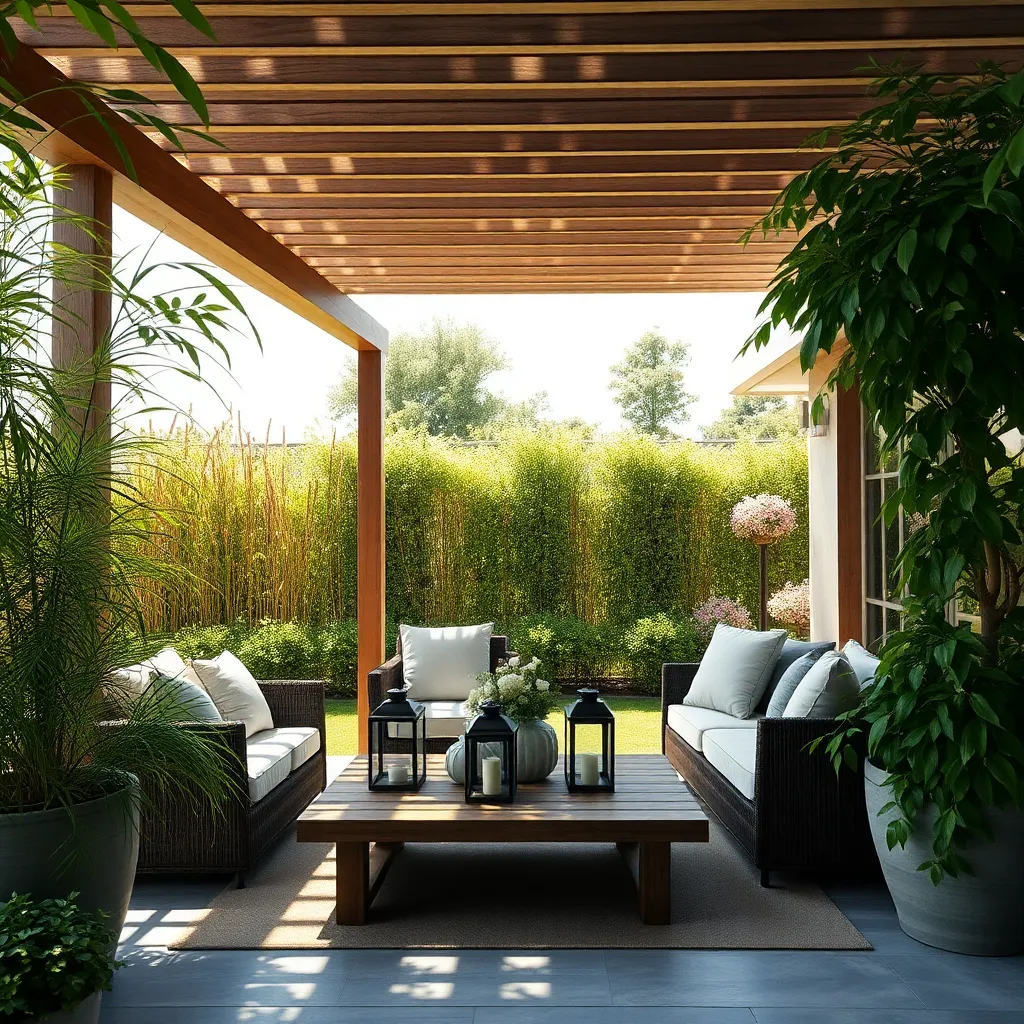
Creating natural screens is an excellent way to enhance privacy in your garden while also adding a touch of greenery. Consider using fast-growing plants like bamboo or hedges such as privet and boxwood, which can quickly form lush barriers. For a more structured look, you can train climbing plants like ivy or clematis on trellises or pergolas, offering both privacy and aesthetic appeal. Make sure to choose plants that suit your climate and soil conditions for the best results.
For those seeking a more permanent solution, consider building lattice panels or using wooden slats as natural screens. Opt for materials like cedar or redwood, which are not only durable but also resistant to rot and insects. You can customize the spacing and height of these structures to suit your privacy needs. For an advanced touch, combine these with hanging planters or vertical gardens to blend functionality with style. This approach not only provides seclusion but also improves the overall ambiance of your outdoor space.
Craft Artistic Shade Sails
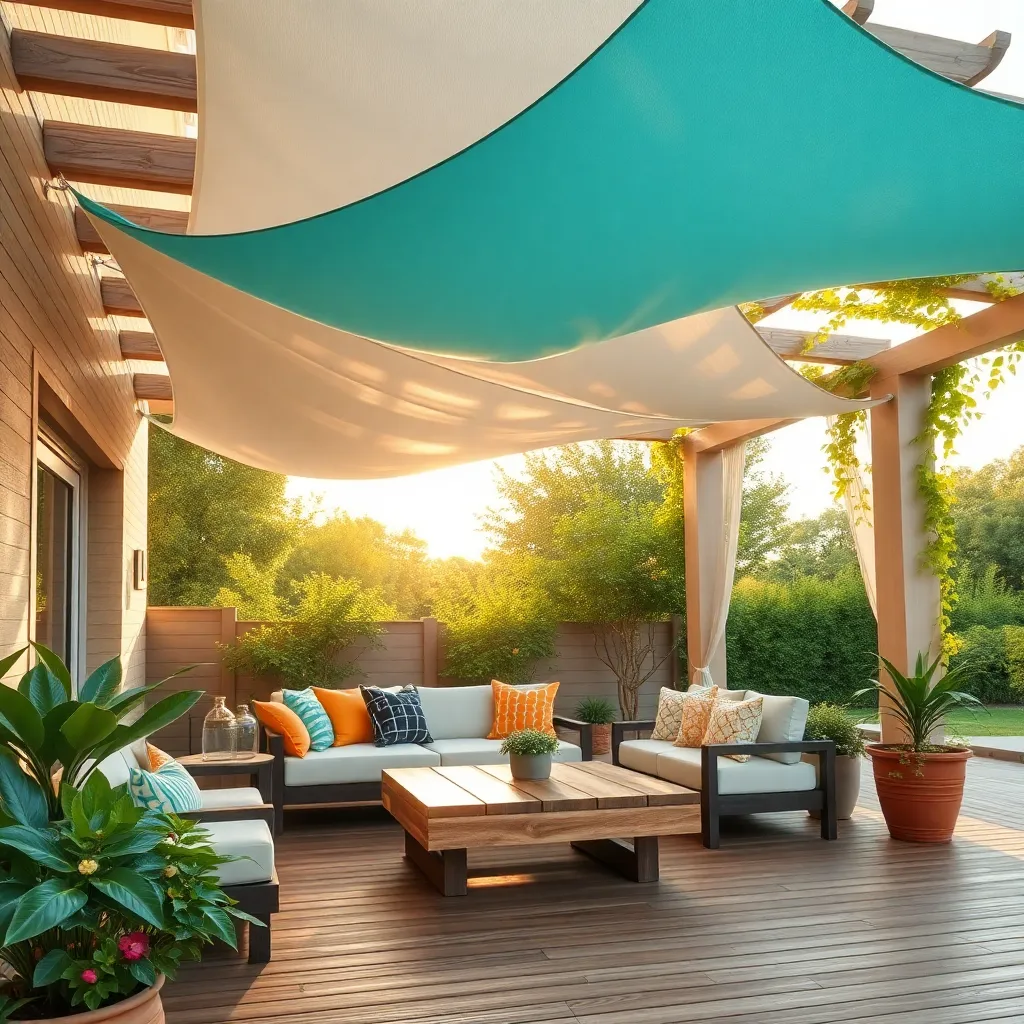
Transform your garden space with artistic shade sails that provide both function and flair. Start by selecting durable materials like UV-resistant fabric to ensure longevity. When choosing colors, consider hues that complement your garden’s natural palette. Installation is straightforward: attach the sails to sturdy anchor points like trees or custom posts, ensuring they are taut enough to withstand wind but angled to allow rain runoff. For a basic setup, opt for triangular or rectangular sails that are easy to install and adjust.
To elevate your design, consider layering multiple sails for a striking visual effect and increased shade coverage. Advanced gardeners can experiment with asymmetrical shapes and overlapping layers to create unique patterns and textures. Ensure each sail is positioned at varying heights and angles for optimal sun protection and aesthetic appeal. When planning your layout, use a tape measure to maintain consistent spacing and symmetry. This project not only adds a touch of sophistication to your yard but also offers a practical solution for enjoying your outdoor space comfortably.
Conclusion: Creating Beautiful Outdoor Spaces
As we journeyed through the ’12 Stylish Garden Shelter Ideas for Every Yard,’ we explored concepts that beautifully parallel the nurturing of relationships. From the cozy intimacy of a pergola to the protective embrace of a gazebo, each idea highlighted the importance of creating spaces where love and connection can flourish. We discovered how the versatility of a retractable awning reflects adaptability in relationships, and how a charming arbor invites new beginnings. These principles remind us that, like a garden, relationships thrive when we invest time, creativity, and care.
Now, it’s your turn to cultivate these insights. Why not choose one garden shelter idea that resonates with you and plan a project with your loved one? This shared endeavor can open up avenues for communication and strengthen your bond.
Remember, relationships are dynamic, living entities that need constant tending. Bookmark this article as a go-to guide for inspiration and guidance. Embrace the opportunity to transform your relationship landscape into a sanctuary of growth and connection.
Looking forward, may your relationships be as vibrant and enduring as the most beautiful garden, blossoming with mutual respect, understanding, and joy. Take action today, and watch your relationship flourish into something truly wonderful.

